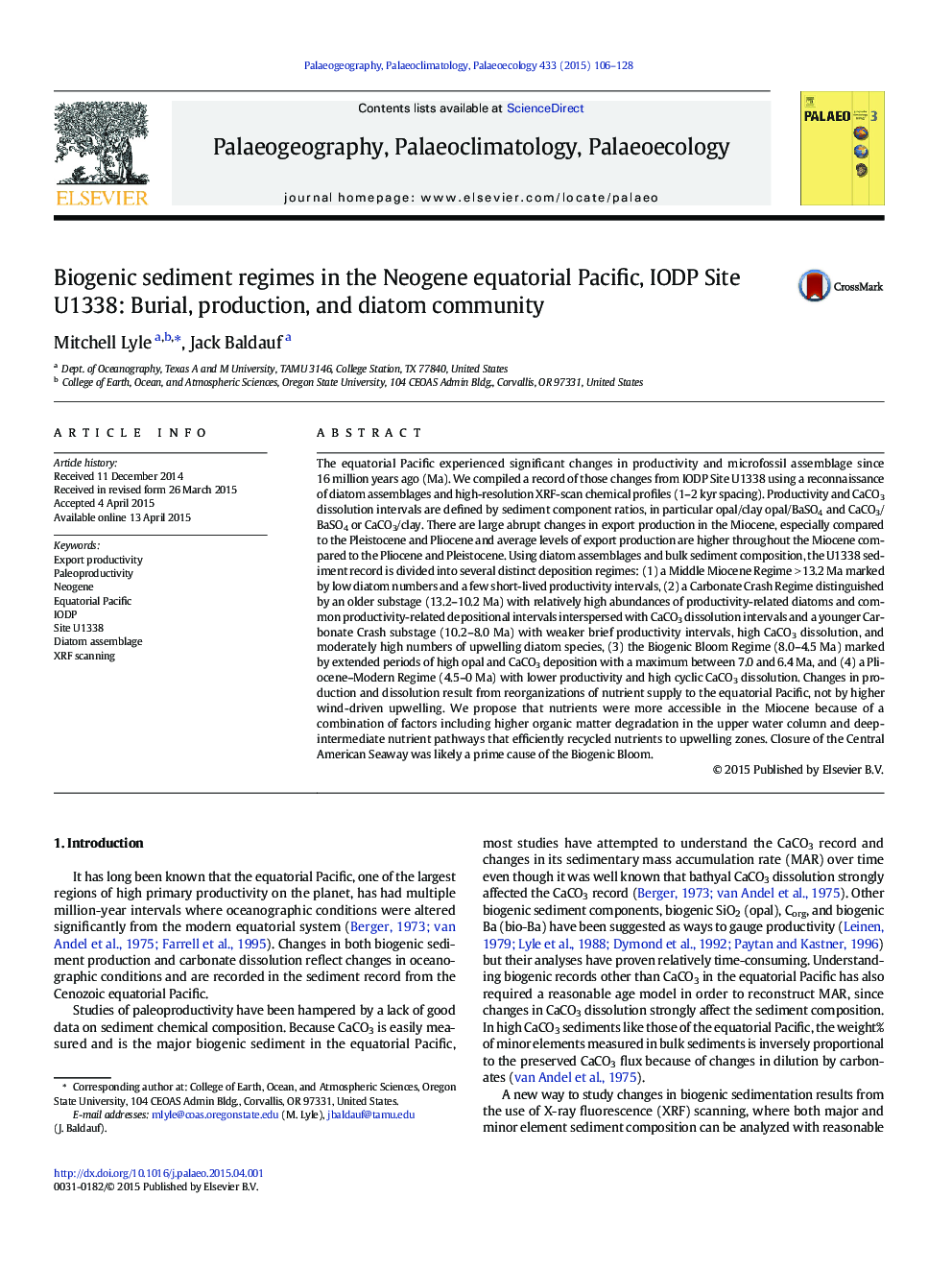| کد مقاله | کد نشریه | سال انتشار | مقاله انگلیسی | نسخه تمام متن |
|---|---|---|---|---|
| 4465922 | 1622157 | 2015 | 23 صفحه PDF | دانلود رایگان |

• XRF scanning measures sediment chemical composition and biogenic component%.
• Elemental ratios track high export production intervals in the equatorial Pacific.
• Diatom assemblage responds partly to production, partly to surface ocean properties.
• Erratic large abrupt changes in export production mark middle Miocene Pacific.
• Central American Seaway closure causes extended late Miocene Biogenic Bloom.
The equatorial Pacific experienced significant changes in productivity and microfossil assemblage since 16 million years ago (Ma). We compiled a record of those changes from IODP Site U1338 using a reconnaissance of diatom assemblages and high-resolution XRF-scan chemical profiles (1–2 kyr spacing). Productivity and CaCO3 dissolution intervals are defined by sediment component ratios, in particular opal/clay opal/BaSO4 and CaCO3/BaSO4 or CaCO3/clay. There are large abrupt changes in export production in the Miocene, especially compared to the Pleistocene and Pliocene and average levels of export production are higher throughout the Miocene compared to the Pliocene and Pleistocene. Using diatom assemblages and bulk sediment composition, the U1338 sediment record is divided into several distinct deposition regimes: (1) a Middle Miocene Regime > 13.2 Ma marked by low diatom numbers and a few short-lived productivity intervals, (2) a Carbonate Crash Regime distinguished by an older substage (13.2–10.2 Ma) with relatively high abundances of productivity-related diatoms and common productivity-related depositional intervals interspersed with CaCO3 dissolution intervals and a younger Carbonate Crash substage (10.2–8.0 Ma) with weaker brief productivity intervals, high CaCO3 dissolution, and moderately high numbers of upwelling diatom species, (3) the Biogenic Bloom Regime (8.0–4.5 Ma) marked by extended periods of high opal and CaCO3 deposition with a maximum between 7.0 and 6.4 Ma, and (4) a Pliocene–Modern Regime (4.5–0 Ma) with lower productivity and high cyclic CaCO3 dissolution. Changes in production and dissolution result from reorganizations of nutrient supply to the equatorial Pacific, not by higher wind-driven upwelling. We propose that nutrients were more accessible in the Miocene because of a combination of factors including higher organic matter degradation in the upper water column and deep-intermediate nutrient pathways that efficiently recycled nutrients to upwelling zones. Closure of the Central American Seaway was likely a prime cause of the Biogenic Bloom.
Journal: Palaeogeography, Palaeoclimatology, Palaeoecology - Volume 433, 1 September 2015, Pages 106–128